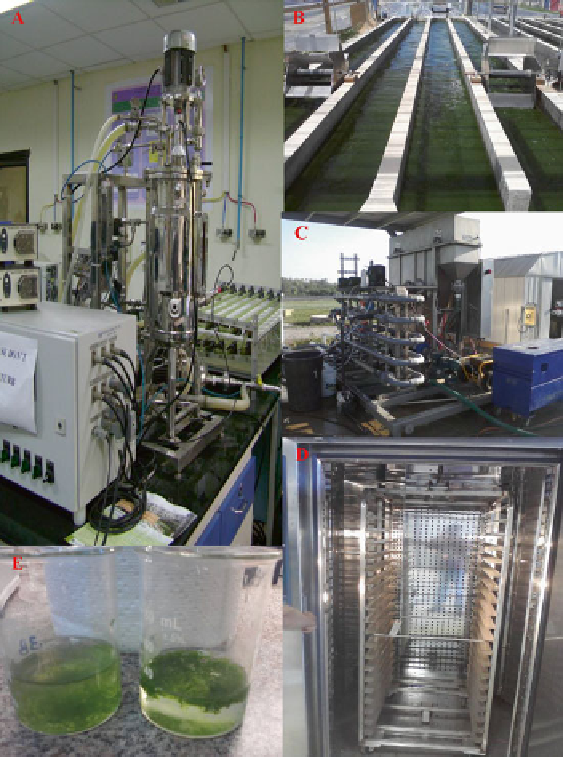Environmental Engineering Reference
In-Depth Information
F fl g . 2
(
a
) An R&D type of photobioreactor, (
b
) concrete raceway pond with a paddle wheel, (
c
) dissolved air fl otation
(DAF) tank, (
d
) culture dryer (industrial scale), (
e
) fl occulated culture
harvest point. However, ponds can have various
advantages and limitations. The major limitation
is that productivity is lower than closed systems,
and environmental factors cannot be controlled
(Chisti
2007
; Borowitzka
1999
; Zeng et al.
2011
).
Generally, ponds are more susceptible to weather
conditions, evaporation, temperature, and light-
ing. Increases in the culture density of CO
2
trans-
fer rate and light limitations could slow down the
cell growth of microalgae.
Atmospheric CO
2
is used to fulfi ll the carbon
requirement, but it contains only 0.03-0.06 %,
which is not enough for the growth of microal-
gae. To improve the overall biomass productivity,
submerged aerators may be installed to enhance
CO
2
absorption, these will be helpful as the
proper mixing of culture can minimize the impact
of both CO
2
and light limitations, thus improving
biomass productivity (Brennan and Owende
2010
). Open pond systems occupy more land
area, and contamination with other algae, bacte-
ria, and protozoans can reduce microalgae growth
(Blanco et al.
2007
; Brennan and Owende
2010
;
Rawat et al.
2013
). The selection of land and
water availability for microalgae culture is
another important factor. Usage of marginal and
non-arable land has more advantages than the use
of arable land. Maintenance and cleaning of open
systems is easier and requires less energy input
than PBRs (Ugwu et al.
2008
; Brennan and

Search WWH ::

Custom Search